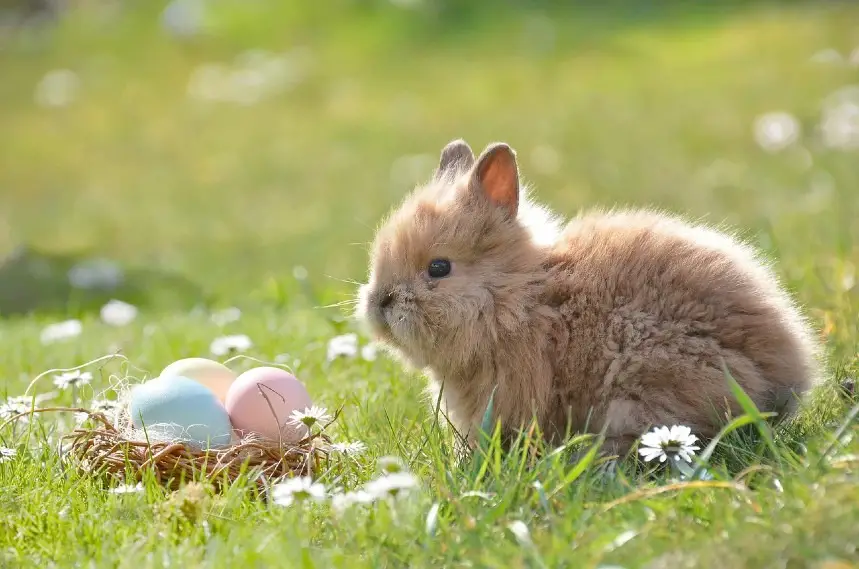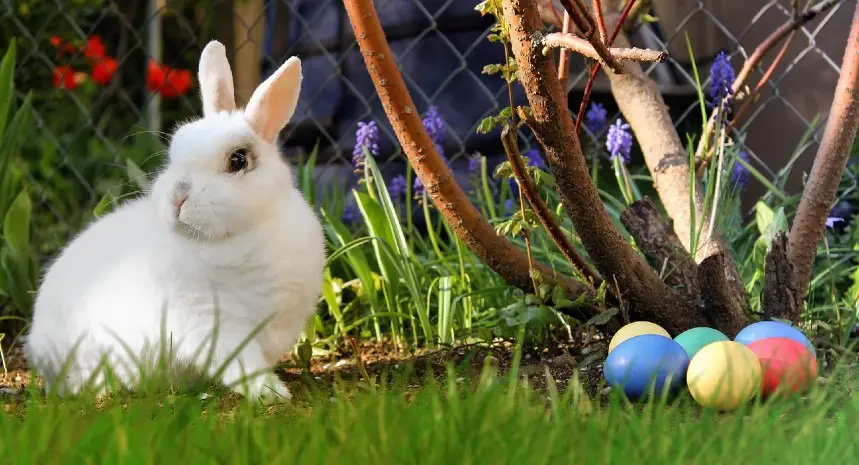Last Updated on May 31, 2023 by
There is a lot of symbolism surrounding Easter. Perhaps one of the most prominent, at least for the non-religious, is the Easter Bunny. So, why has the bunny become associated with Easter? Is the Easter Bunny real and what is the origin of the Easter Bunny? Well, that is what we are going to take a look at on this page.

Easter Bunny History – Assumptions
It is worth knowing that, like many myths, we don’t know the full story of where the Easter Bunny originated. There probably isn’t a single ‘source’ story. This means that it is impossible for anyone to tell you the complete history of the meaning on this page, simply because even historians do not know.
However, we will try and give you a few ideas.
It is also worth noting that despite the Easter Bunny being associated with a Christian holiday, the origins are not really Christian at all.
We are not 100% sure how the bunny came to e associated with Easter in particular, it is something which probably just happened. He does have a pretty cool origin story, though.
Origin of the Easter Bunny
A lot of countries seem to have the concept of the Easter Bunny, well, at least European countries and the United States.
However, this is something which is fairly recent.
Until a couple of centuries ago, the Easter Bunny only existed in Germany.
It was German immigrants who took the concept of the bunny over to the United States, and the popularity of it exploded from there.
It All Began With Eggs
Before, eggs were a popular tradition in Christianity. During Lent in the 13th Century onward, it was forbidden to eat any eggs by the church.
The next time you could eat eggs was when Easter rolled around. Hence the common idea of associating eggs with Easter.
A lot of people do seem to believe that eggs tie into ‘new life’ created at Easter (it comes close to the start of Spring) but nope, it was all about churches banning the consumption of eggs.
Of course, this ‘banning’ of the consumption of eggs eventually lead to eggs becoming a symbol of Easter. This meant that eggs would be decorated and nowadays we have the chocolate eggs that children love to consume on Easter Sunday.
The Original Easter Bunny Was a Hare
Now that is out of the way, we can talk about the actual origins of the Easter Bunny. Oddly enough, it didn’t begin with a bunny. It began with a hare.
In fact, even now, we still depict the bunny as a hare. We just call it a bunny because it sounds cuter, we guess. This is where we actually see a bit of tying into Christianity.
For a short period of time during the medieval period, you would have seen pictures of hares in churches.
This is because, at the time, it was believed that hares could conceive and give birth on their own. We are not quite sure where this belief came from, but it was certainly an idea at the time.
Of course, this was linked to the Virgin Mary (who also gave birth in the same way), and thus pictures of hares started to appear in churches, simply because it was believed they were the only animal that could do this.

This is perhaps the origin of the hare in Easter celebrations and how it may be tied into the current day story of the Easter Bunny.
It is worth noting that none of this is mentioned in the Bible. The only time hares are mentioned in the bible is when it is discussed whether you should eat them or not. The Bible says that you shouldn’t because they are dirty creatures.
This, of course, does make it somewhat confusing about why hares are linked to such a central figure in Christianity, and we will probably never know the answer. All we know is that it ‘just happened’.
There are Other Legends of Easter Bunny
There are other legends of the Easter Bunny, although a lot of them are disputed now. For example; for a while, there was some belief in Anglo Saxon times that the God of fertility handed out bunnies to children to amuse them.
These bunnies often came bearing gifts of eggs. There is actually no evidence that this was a belief in Anglo Saxon times and it is widely disputed.
It seems to be a theory that popped up sometime in the 18th Century without any reason. That being said, this is something that may have happened in Anglo Saxon times. It just seems a bit too ‘convenient’ for the Easter Bunny legend.
The Modern Easter Bunny Origin
The origin of the modern Easter Bunny actually happened in the United States. It happened in the 18th Century when German immigrants took a tradition to the Pennsylvania Dutch colonies.
They talked about the Easter Hare (which became the Bunny). This eventually evolved into tales of children receiving eggs when they were good at Easter (similar to the tale of Santa Clause) and, ultimately, the tradition of decorating eggs and handing them out as gifts.
Obviously, we do not know exactly how this started to happen. One can assume that a few of the German people who started to spread the legend may have had similar stories in their home growing up and due to the few people living in these colonies at the time, it was easy to start spreading some of the newer traditions.

The modern Easter Bunny is said to lay these eggs, much like the medieval version of the hare when it was tied into the Virgin Mary, which does show that the tradition has gone ‘full circle’.
Most European countries (and ones colonized by Europeans) have the Easter Bunny as a symbol of Easter nowadays.
However, other countries do have other animals in their place. It is likely that they all have the same ‘origin’ story. Either way, we know that we end up with some delicious eggs when Easter rolls around each year!
